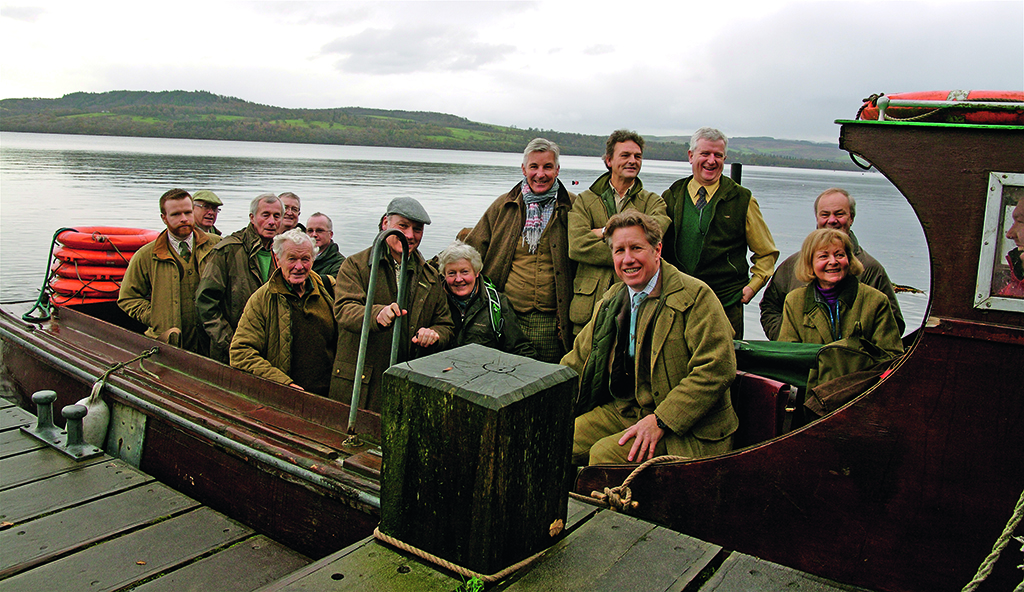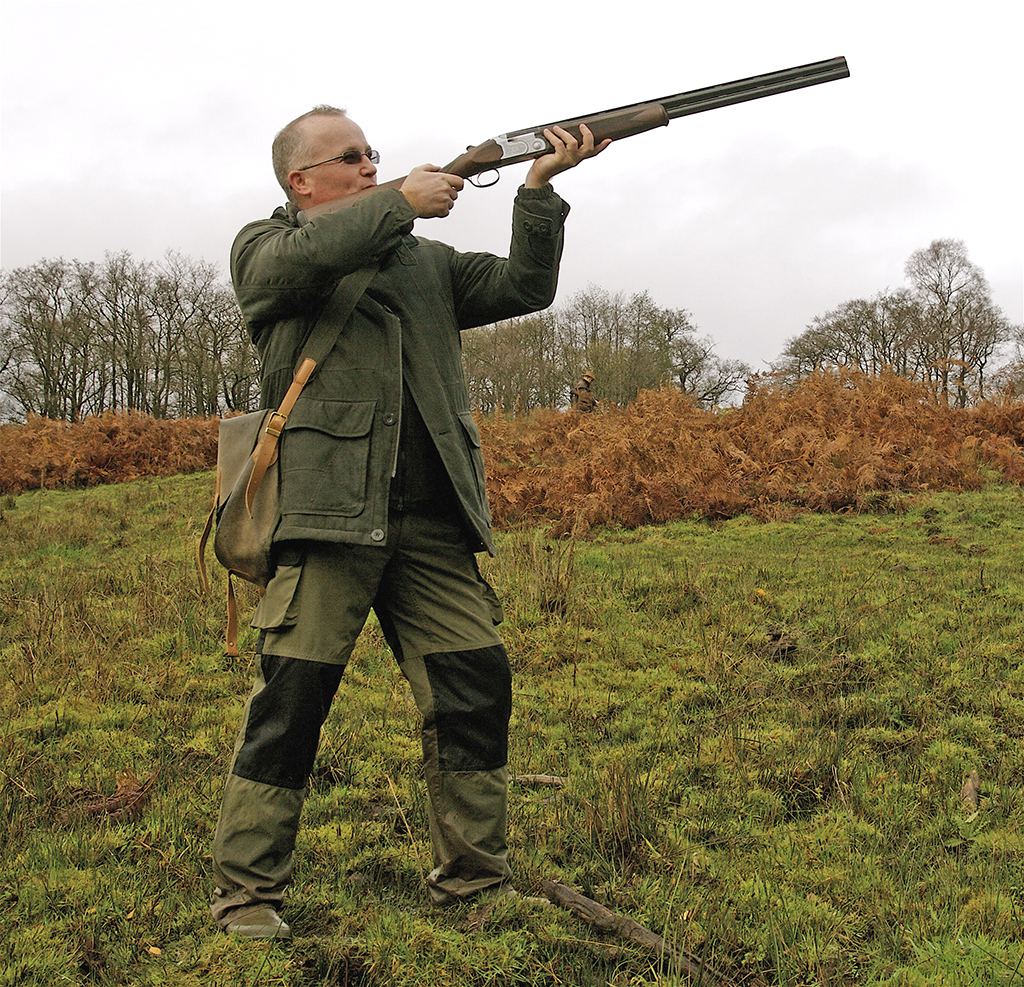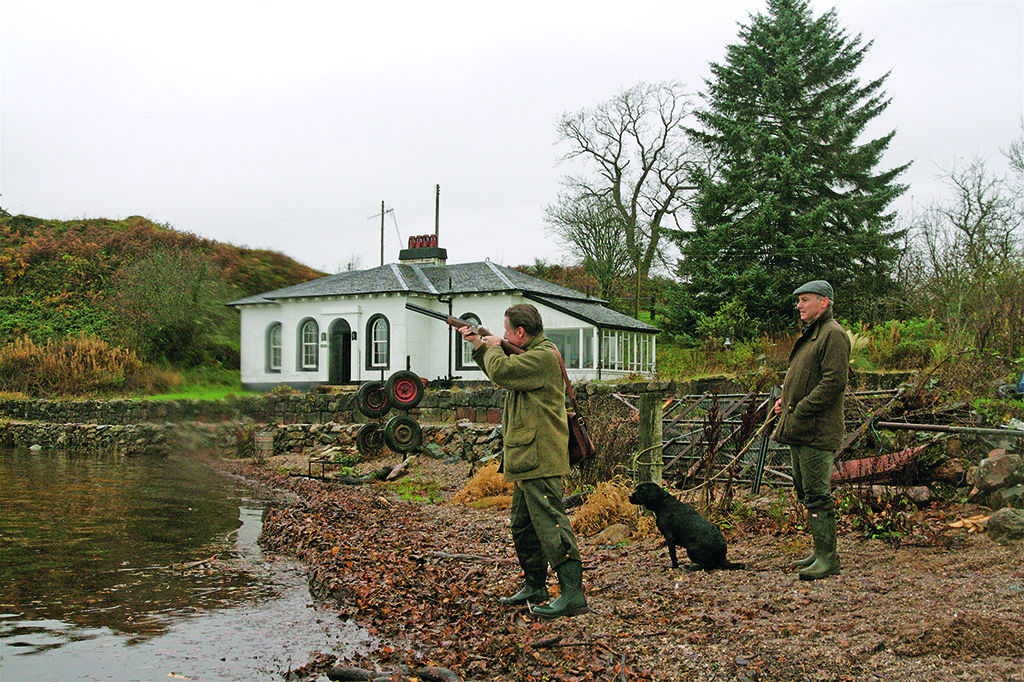
Shooting on the island that time forgot
A pheasant shoot on Inchmurrin island in the middle of Loch Lomond feels like an escape from modern life, starting with a peaceful boat ride and ending with views of a Scottish landscape that take your breath away.
The clouds may be the darkest shades of grey and the current may look a bit wild, but the view from the little ferry port at Arden to Inchmurrin Island is Scottish scenery at its best.
The amber-leaved trees that border the loch sparkle like decorations in the water’s reflection and the sprinkling of snow on Ben Lomond makes it look like an iced Christmas cake. I can see why this island is loved by the 18 syndicate members who have been shooting pheasants and the odd woodcock here every winter for the last 20 years.
I look on as the hunters help each other into a boat that dates back to World War II, and place their canvas gun slips and game bags under the roofed section to keep dry. The dogs are the last to come on board and sit next to their owners for the 15-minute journey across the loch.
It’s a peaceful boat ride – not because everyone is quiet, but because it feels as though we have left any stress behind back at Arden pier As we pass by Cameron House, the banter begins and I am warned the deep mud on Inchmurrin can be a bit like quicksand in places. It sounds as if you have to take a leap of faith when you walk across the sinking terrain here, and my stomach is churning with nerves and excitement. But the smiles on everyone’s face reassure me it’s a happy adventure that awaits.

Travel to Inchmurrin island takes 15 minutes by ferry boat. (Photo: Melissa Volpi)
Once we dock on Inchmurrin, we walk up to the only restaurant and bar on the island – which has been owned and run by the Scott family for more than 70 years. From Easter to October, it is open to tourists. When you phone to reserve a table for lunch, you will be asked to be at Arden pier 15 minutes before your reservation so that Tom Scott, one of the younger members of the family, can steer you across the loch on the same old boat we have used. It has become such a romantic venue for lunch, that weddings are now held here throughout the summer months too.
Anne Scott and her son Dugald are serving up tea, coffee and bacon rolls as I arrive. It’s a welcome addition to the early morning start and as everyone wakens up, shoot captain Gary Culpan begins his safety talk and hands out cards to everyone shooting. If your card has black numbers and symbols, it means you are a walking gun for the first drive; if your card has red numbers and symbols, it means you are a standing gun.
There are five drives on an Inchmurrin shoot and after the first each group of guns swap round, so the walking guns get a chance to stand at the peg and the standing guns get to do a bit of walked-up shooting. The system works well and the result is that everyone gets involved in all aspects of the day, from shooting to beating and picking up.
No one stands on ceremony here. At Inchmurrin you have to work for your birds, and the five dogs on hand to help point, flush and retrieve are shared with the whole group. Safety is taken very seriously. Walking guns are mainly working as beaters, but they can shoot behind them if an opportunity arises, while standing guns must only shoot upwards into the sky; no low forward shots are allowed.
‘All you need is a good pair of wellies,’ says Gary as we get ready for the day. I’m not sure quite what to expect as drive number one is called Bridge to Happy Valley – Happy Valley being the name of the nudist colony on the island, which is made up of a collection of small wooden huts and has been a popular summer resort since the 1960s. (I can’t help picturing a group of hunters striding across Happy Valley with nothing on but a good pair of wellies and a Beretta slung across their shoulder.) So, I’m relieved when I see the tweed jackets going on instead of the checked shirts coming off.

Syndicate member Peter Ramsay takes aim (Photo: Melissa Volpi)
As we head out in two groups, along the back of the hotel and across a stile into an upward sloping grass field, I begin to understand Gary’s comment about the wellies. The terrain is muddy to say the least and the depth that your boots sink in really gets the calf muscles working.
We pass by an old barn that looks as if it may fall down at any second and stop once we reach the top of the hill. Inchmurrin is only 1.2 miles long, so you can see most of it from this vantage point. It’s a very green landscape, made up of fields and forestry, but the best bit is the 360-degree view of the mainland. I’ve been on many game shoots over the years, but none that provide such a magical quality as this. It feels as if you can see all of the best bits of lowland Scottish scenery from this one point.
It is here that we split into two groups. The black group, headed by Gary, walks towards the forestry that surrounds Happy Valley and get into place for beating. I walk down a steep hill to the right with the red group, which gets into place for shooting.
Every so often one group member stops and faces the forestry. The idea is that all eight guns form a line down the hillside to the water’s edge. It’s a spectacular sight and to get the best view I stand at the second-last peg with George Brown and his Hungarian vizsla, Rufus, which means I have to tackle the climb down.
It is quite a nerve-racking experience to have your wellies sink so deep into the mud that you cannot see the tops of your welly socks. Thankfully, it’s only like this for about a third of the way down, but I do take my furry hat off to these syndicate members; they may all work in the city, but they’re a hardy bunch.
We can hear the walking guns roar in the distance to try and bring the birds up for us, but they still seem a little too far away for the standing guns to shut their shotgun muzzles and get into position. So George and I watch Rufus, his hyperactive seven-year-old pointer, run along the edge of the forest, sniffing, listening and working.
The five dogs here are not what you normally see on a pheasant shoot, but they all know their job nonetheless. As well as Rufus the vizsla, there is Tess the springador, rescue dog Basil, Rona the golden retriever and springer spaniel Hoy, all of whom are working hard to find birds. I’m particularly impressed by Rufus, who points in the direction of the pheasants before the other dogs have caught on to the scent and, because of this, George manages to bag the first two pheasants of the day on drive one.

Shoot captain Gary Culpan is watched by Keith Mitchell and springador Tess. (Photo: Melissa Volpi)
As soon as George fired his first shot and brought the first pheasant down, Rufus ran into the ferns and retrieved it straight away. Once George had the bird in his hands, Rufus started to go on point again. Growing in popularity down south, vizslas are still relatively new to Scottish shooting. Rufus is beautiful to watch in action and blends in well with the tan-coloured ferns on this drive.
We can see the walking guns now and it’s not long before Gary blows his horn to signify the end of drive one. ‘Don’t worry,’ he says with a smile. ‘That’s the hardest drive of the day walking wise.’
Hoping he is right, I puff and pant back up the hill ready to watch drives two to five, which all have colourful names. Drive two is called ‘High Jump at the Saw Bench’; drive three is, ‘White Gate to the Hotel’; drive four is ‘Saw Bench to the Farm, Taking in the Castle’; and drive five is called, ‘Hotel to the Farm’.
‘Of course, most of these things don’t exist now,’ Gary tells me as we walk to drive two. ‘Everyone new to the shoot always asks where the white gate or the saw bench are, but they only exist in memory now. They were all here when the syndicate first started, but over the years things have changed. The younger members think we’re mad, but the older members still remember their best shooting memories from those places.’
The weather gets wetter and wetter, but everyone carries on and has fun as we work through the drives. Not a lot of pheasants get shot, but that is not the aim of the game on Inchmurrin. Everyone always shoots a couple for the pot, but the most important aspect for the syndicate members is the workout for themselves and the dogs. And, of course, the banter.
As we head to drive four, which is right on the lochside, we can see the remains of the castle. This ruin harks back to the island’s early days when the Duke of Montrose built this as a hunting lodge in 1793 and had his own deer park here.

Belinda Morison during one of the five drives on the Inchmurrin shoot. (Photo: Melissa Volpi)
There are no deer on the island today, but there are a thousand pheasants, a herd of cattle, a few pigs, two Highland ponies and one sheep that thinks it’s a horse. Inchmurrin may have moved with the times during the summer months with its nudist colony and Buddhist retreats, but in the winter months the island’s hunting tradition is brought back to life when the syndicate hold ten days of pheasant shooting between November and January each year.
Gary sums up the good points as he helps Keith Mitchell, his guest on the shoot today, try to bag some pheasants on the last drive. ‘Two good points about shooting on an island are that you cannot lose a dog here and the pheasants cannot fly off onto the mainland.
So it’s the perfect training ground for both the dogs and the guns,’ Gary says, while repeating the words ‘bum, beak, bang’ to Keith as he takes his line when a group of pheasants fly high over our heads. ‘But the best bits are coming to the shoot by ferry, taking in this utterly magnificent scenery and being welcomed by such great hospitality from the Scotts,’ he adds.
As we walk back to the hotel, to a roaring fire and a bowl of freshly made minestrone soup, I can’t help thinking that he is right. Inchmurrin is not just a romantic venue for lunch or a wedding; it’s one of the most romantic places in Scotland to go for a day’s pheasant shooting – even in the rain.
(This feature was originally published in 2015)
TAGS

